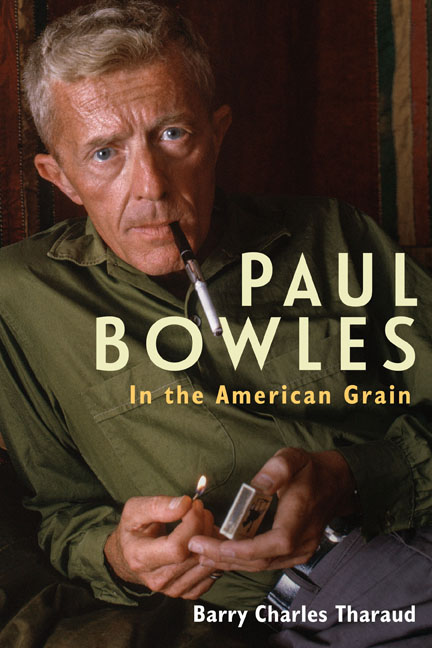Book contents
- Frontmatter
- Contents
- Preface
- Acknowledgments
- Abbreviations
- Introduction: Paul Bowles as a Canonical Writer
- 1 Paul Bowles on Intercultural Understanding: Too Far from Home
- 2 The Discovery of Existence: Without Stopping
- 3 Emersonian Shadows
- 4 Culture and Existence in Bowles’ Short Fiction
- 5 Gide and Bowles in North Africa: The Sheltering Sky
- 6 Language, Noise, Silence: Self and Society in Let It Come Down
- 7 The Spider’s House: The Social Construction of Reality
- 8 Existence and Imagination: Up Above the World
- 9 The Letters: In Touch
- Conclusion
- Bibliography
- Index
7 - The Spider’s House: The Social Construction of Reality
Published online by Cambridge University Press: 24 November 2020
- Frontmatter
- Contents
- Preface
- Acknowledgments
- Abbreviations
- Introduction: Paul Bowles as a Canonical Writer
- 1 Paul Bowles on Intercultural Understanding: Too Far from Home
- 2 The Discovery of Existence: Without Stopping
- 3 Emersonian Shadows
- 4 Culture and Existence in Bowles’ Short Fiction
- 5 Gide and Bowles in North Africa: The Sheltering Sky
- 6 Language, Noise, Silence: Self and Society in Let It Come Down
- 7 The Spider’s House: The Social Construction of Reality
- 8 Existence and Imagination: Up Above the World
- 9 The Letters: In Touch
- Conclusion
- Bibliography
- Index
Summary
AS EDWARD SAID COMMENTED a good while back, “all cultures impose corrections upon raw reality, changing it from free-floating objects into units of knowledge.” From there, it is no great leap to consider how various institutions—including family, class, gender, and so forth— influence and control individuals, as we have already seen in chapter 4 on Bowles’ short fiction. But the same process of “imposing corrections” can also occur from the opposite direction as individuals interpret and construct their own reality. From early childhood on, Paul Bowles was acutely aware of his own and others’ marginalization in a variety of contexts, and such concerns are reflected everywhere in his fiction. In his third novel, The Spider's House (1955), Bowles engages in the traditional and peculiarly American project of examining the way human consciousness, even in a highly conservative religious society, constructs and projects a reality that is a mixture of personal and cultural elements. The novel is set during the Moroccan revolution of the mid-1950s and is therefore contemporaneous with the writing of the novel, although the author at the time of writing was living on a tiny island off the southern tip of Ceylon. Bowles had visited Fez—the main setting of the novel and the cultural capital of Morocco—in the early 1930s, and he visited the city many times after he moved to Morocco in 1947. Owing to the preferences of Jane Bowles, the couple settled in the colonial International Zone in Tangier, where Paul later experienced the political fallout and aftermath of the Moroccan struggle for independence. (Since Tangier was part of the International Zone, its independence and unity with the rest of Morocco occurred later, as described in Bowles’ autobiography.) Although Bowles deliberately focuses on an important political upheaval, his keen awareness is often reserved for the “psychology of politics” rather than the strictly historical. I take his phrase to mean the way historical and political events are refracted through the human imagination and become part of our individual stories, as well as the way such individual refractions, consciously or unconsciously, in turn influence politics and history. So, once again we are in the realm of Emerson's and Bowles’ transcendental and existential concern with existence and consciousness, but in a way that is less narrowly focused than in “A Distant Episode” and the first two novels.
- Type
- Chapter
- Information
- Paul BowlesIn the American Grain, pp. 143 - 166Publisher: Boydell & BrewerPrint publication year: 2020

